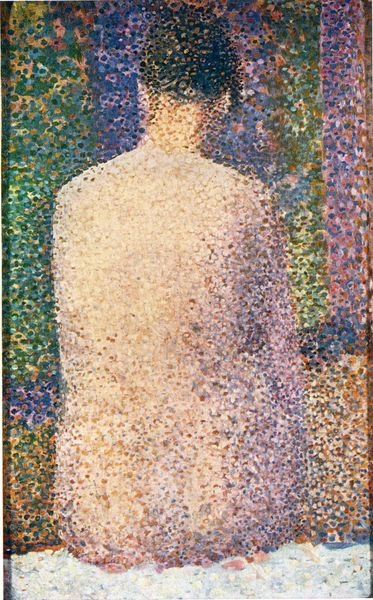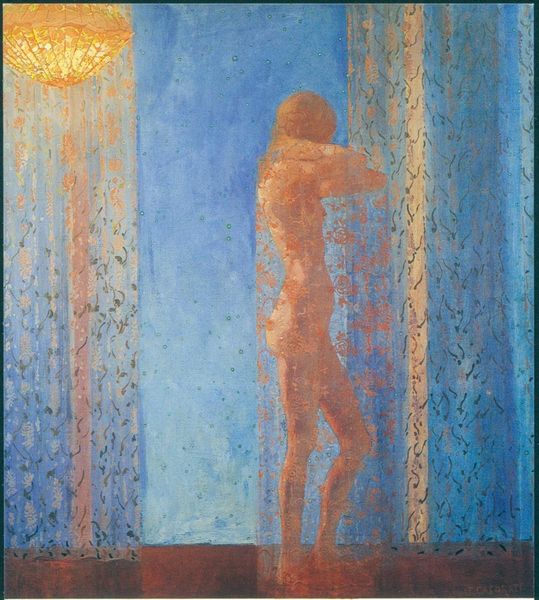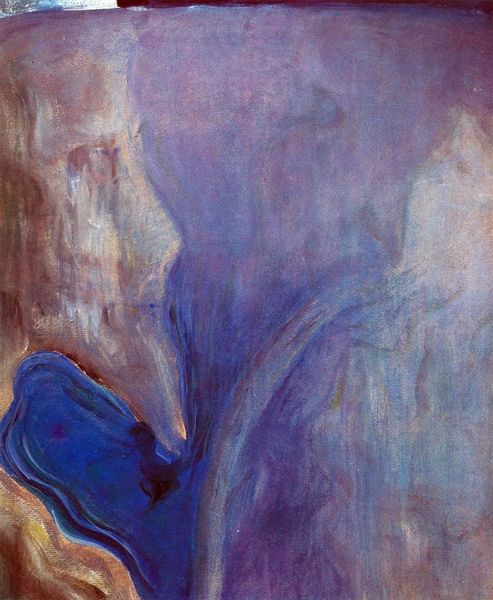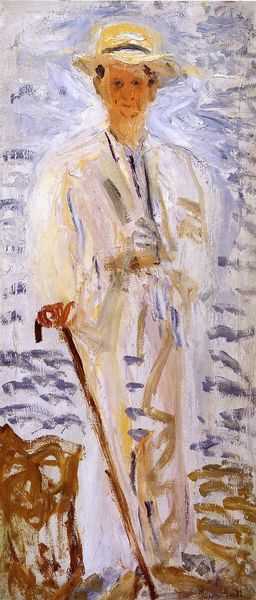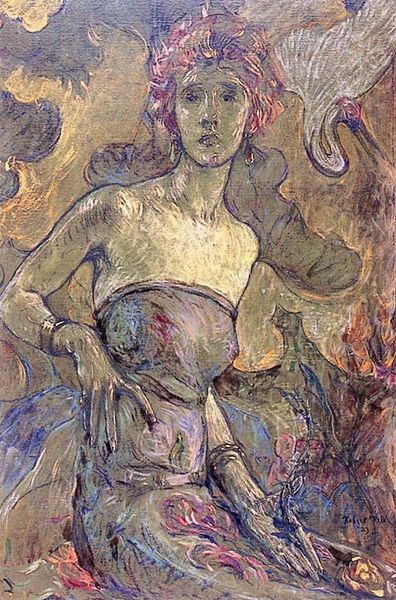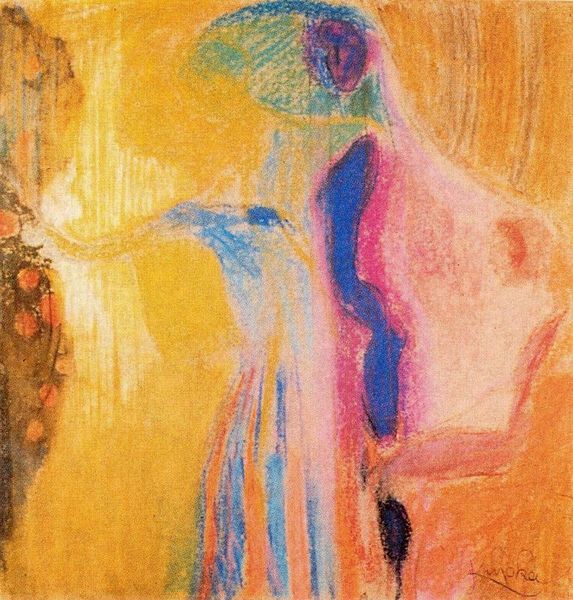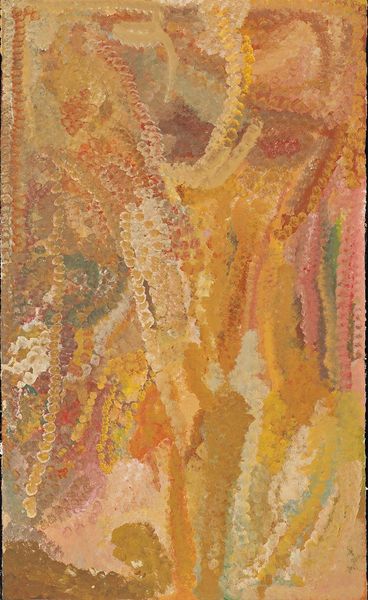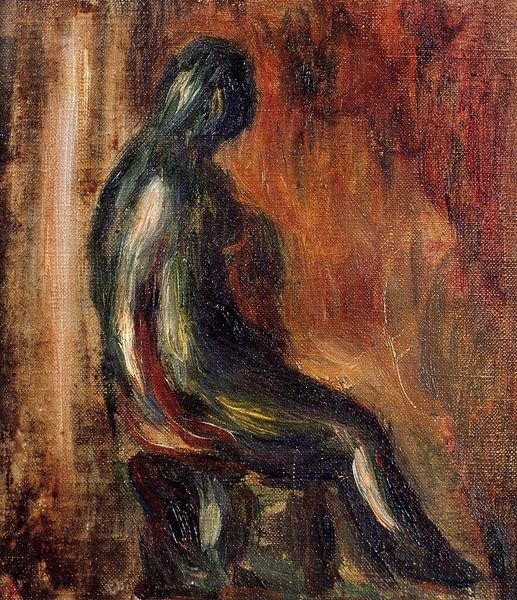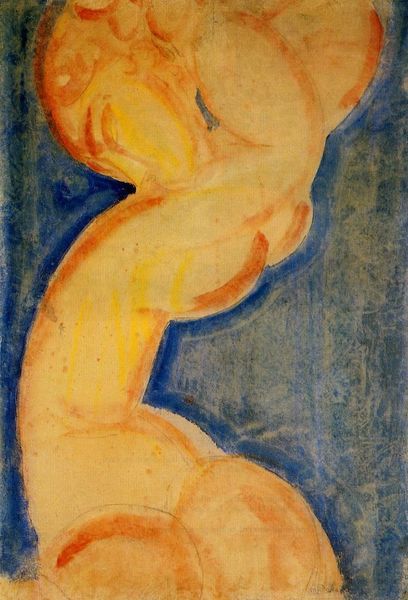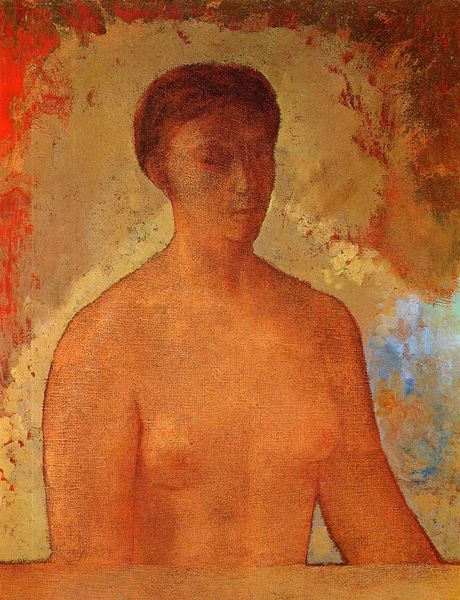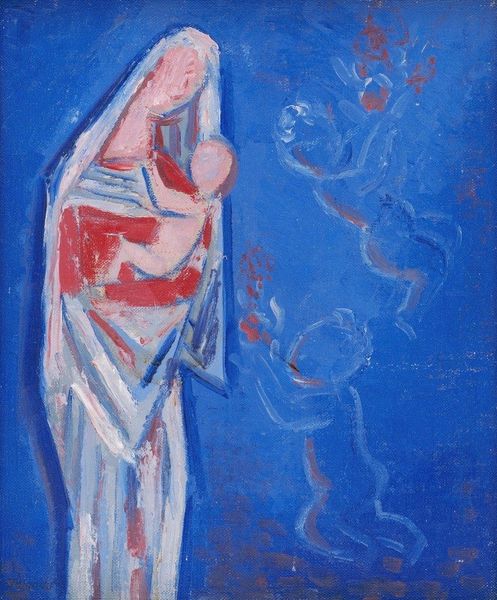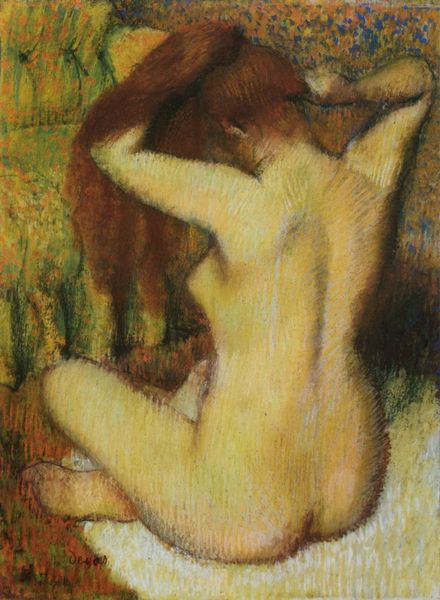
painting, oil-paint
#
portrait
#
painting
#
oil-paint
#
neo-impressionism
#
figuration
#
female-nude
#
post-impressionism
#
nude
Dimensions: 157 x 26 cm
Copyright: Public domain
Curator: Looking at “Poseur standing, front view, study for Les poseuses”, dating from 1887 and conceived by Georges Seurat, one sees immediately that pointillist application of oil paint, which distinguishes so much of the artist's practice. Editor: It's certainly arresting. At first glance, it feels like the figure is dissolving, merging with a sort of patterned wallpaper. The figure's solid form starts to read as mere texture, part of the larger whole. Curator: Precisely. And in this way, Seurat touches upon a symbolic language that questions the solidity of the body itself. Is she a real woman, or is she an idealized form, barely separated from the world around her? Nudity carries immense cultural baggage and history. How does the woman fit within the evolving symbol set, moving beyond simply Eve or Venus? Editor: That disintegration seems intentional, a direct result of the visible brushstrokes. The neo-impressionistic technique forces the viewer to actively assemble the image, to see both the individual marks and the totality they produce. This is enhanced by the complementary contrast, in both hue and tone, making the nude seem dematerialized. Curator: Think, too, of the gaze: it’s both absent and direct. Seurat evokes not a specific individual but a type, an icon of womanhood existing somewhere between presence and absence. The pose is very casual, which pushes it out of the trope of academic nudes but simultaneously holds onto a very specific classical format. The symbol set, therefore, carries both radical modernity and archaic recall. Editor: You've put your finger on it. It challenges our habitual ways of seeing, highlighting the artifice involved in representation itself, how something new can still speak the language of tradition, but not quite so loudly. I like it very much. Curator: It remains a fascinating work, sparking ongoing conversation about the artist's meticulous method and profound questioning of cultural codes. Editor: Indeed. There's something quite potent in its fragmented unity.
Comments
No comments
Be the first to comment and join the conversation on the ultimate creative platform.
